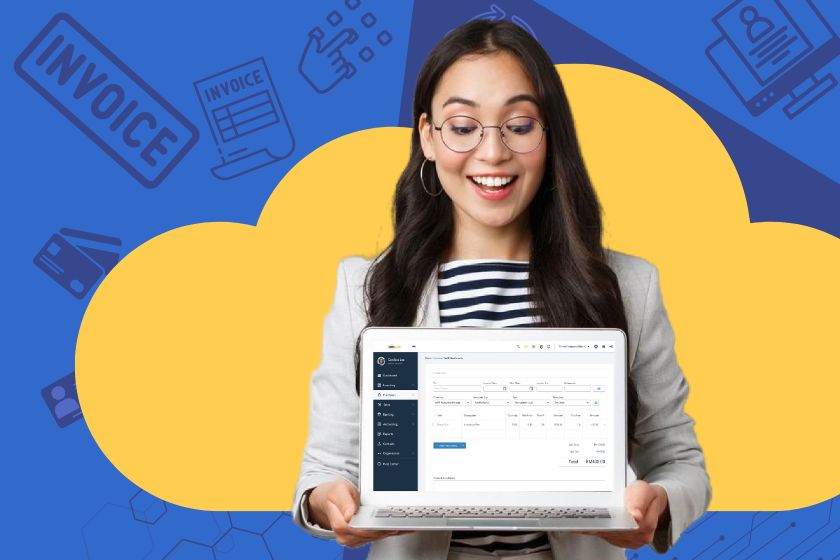The Malaysian government has observed the global trend of e-invoicing adoption and has decided to implement it in Malaysia. The Ministry of Finance mentioned in the 2023 Pre-Budget statement that Malaysia will adopt the e-invoice initiative to digitise tax administration activities.
In October 2023, the Inland Revenue Board of Malaysia (IRBM) announced that e-invoicing will postponed and gradually introduced from 1 August 2024.
What is e-Invoicing?
Inland Revenue Board of Malaysia (IRBM) introduces e-invoice, a digital file created in a specific format. It serves as digital proof of a seller and buyer transaction. E-invoicing replaces physical paper or other electronic documents, such as invoices, credit notes, debit notes, or non-specified formats like images, PDFs, or Excel files.
An e-invoice to be valid in Malaysia, it must contain 53 mandatory fields. These fields include crucial details such as seller and buyer information, item description, quantity, price, tax, total amount, payment details, and more.
You can read in detail about e-Invoicing in this blog here: E-Invoicing: What Every Business Needs To Know By 2025
The Process Flow of e-Invoicing in Malaysia

Types of e-Invoices:
- Invoice: A supplier issues a self-billed e-invoice to document a transaction and record expenses with a buyer.
- Credit Note: Suppliers issue a credit note to correct errors, apply discounts, or account for returns in a previous e-invoice. The note’s purpose is to reduce the value of the original e-invoice. This is used when reducing the original e-invoice, which does not involve returning any money to the Buyer.
- Debit Note: A debit note indicates additional charges on a previously issued e-Invoice.
- Refund Note: A document issued by a supplier to confirm that the buyer’s payment has been refunded.
Transactions covered under Malaysia e-invoice
E-Invoice covers transactions such as:
- Business to Business (B2B),
- Business to Customer (B2C), and
- Business to Government (B2G). The e-invoice flow for B2G transactions will be similar to B2B.
The e-invoice is mandatory for all commercial activities in Malaysia, including the sale of goods and services and specific non-business transactions between individuals.
For B2C transactions, sellers are not required to issue e-invoices to the end consumers. Instead, they may issue a standard invoice or receipt. After a specific period, the seller should consolidate all the standard invoices or receipts and release a consolidated e-invoice.
The Challenges Of E-Invoicing For Businesses In Malaysia
The Malaysian business landscape has undergone transformative changes with the introduction of e-invoicing. However, businesses have encountered several challenges on this digital journey:
- Regulatory Compliance: The rules are set to gradually expand their coverage to include all tax-registered companies by 2025. However, complying with these regulations can be challenging, especially for companies with complex systems.
- Technological Transition: Transitioning to e-invoicing requires shifting from manual to automated processes. Businesses face hurdles adapting to new tech, integrating e-Invoicing with existing systems, and training staff.
- Data Security Concerns: Companies must prioritise data security and privacy as sensitive financial data is transmitted electronically.
- Resistance to Change: Resistance to change within an organisation can make it challenging to adopt e-invoicing. This requires effective change management strategies to help employees acclimate to new invoicing methods.
- Technological Readiness: Small businesses with limited IT infrastructure may not be technologically prepared for e-invoicing, and adapting/upgrading systems to align with e-invoicing standards can be resource-intensive.
- Data Accuracy and Integration: Seamless integration of e-Invoicing technology with enterprise resource planning (ERP) systems requires meticulous planning to ensure accurate data exchange and synchronisation across departments.
- Supplier Onboarding: Collaborating with suppliers to adopt e-invoicing can be challenging and time-consuming, as it requires ensuring all partners are aligned with the procedures and technology.
Embracing e-invoicing provides various benefits, such as a streamlined accounting process, digital transformation, economic efficiency, and enhanced operational and customer satisfaction, despite the challenges.
How Can Info-Tech Help with e-Invoicing in Malaysia?
Info-Tech’s Accounting Software has an e-invoicing feature approved by LHDN to ease your experience with the newly implemented law. As tax laws are constantly evolving, Info-Tech is here to help you stay up-to-date and navigate any confusion that may arise.
Info-Tech assists businesses in maintaining tax law compliance by providing helpful support and guidance. With our accounting software, you can also create invoices, convert bills, purchase orders, and quotations into invoices for more straightforward documentation and IRBMs.
Our mobile app also allows you to view and create invoices while on the go, making accounting work more accessible and efficient. You can also check for discrepancies before submitting to ensure accuracy and avoid penalties. With our support, you can rest assured that you will easily maintain compliance.

